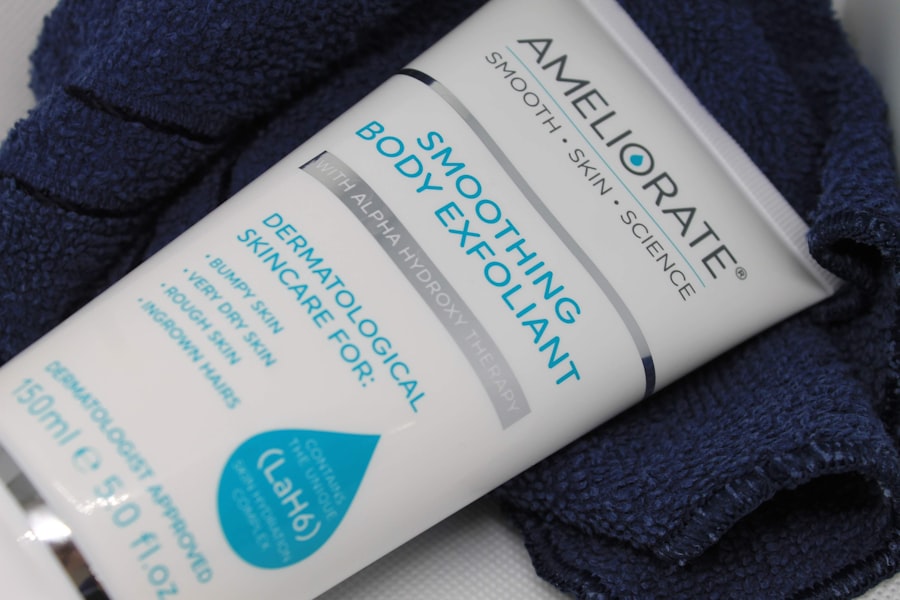When you embark on a journey of healing, whether it’s from a surgical procedure, a skin treatment, or an injury, it’s essential to grasp the intricacies of the healing process. Your body is a remarkable entity, capable of repairing itself through a series of complex biological mechanisms. Initially, your body will respond to injury by initiating inflammation, which is a natural part of the healing process.
This phase is characterized by redness, swelling, and sometimes pain, as your immune system works diligently to prevent infection and begin the repair process. As you progress through the healing stages, you will notice that your body transitions from inflammation to tissue formation and finally to remodeling. During the tissue formation phase, new cells are generated to replace damaged ones, and this is when you may see scabs or new skin forming.
The remodeling phase can take weeks to months, where the new tissue strengthens and matures. Understanding this timeline can help you set realistic expectations for your recovery and encourage you to be patient with yourself as your body works its magic.
Key Takeaways
- Understanding the healing process is crucial for proper skincare
- Proper cleansing and moisturizing are essential for promoting healing
- Sun protection is necessary to prevent further damage to the skin
- Avoiding irritants can help prevent inflammation and promote healing
- Gentle exfoliation can aid in the removal of dead skin cells and promote healing
Proper Cleansing and Moisturizing
Cleansing and moisturizing are fundamental components of any skincare routine, especially during the healing process. When your skin is recovering, it’s crucial to keep it clean to prevent infections and promote optimal healing. You should opt for a gentle cleanser that won’t strip your skin of its natural oils.
Look for products that are fragrance-free and formulated for sensitive skin. Cleansing should be done twice daily—once in the morning and once before bed—to remove dirt, oil, and any impurities that may have accumulated. Moisturizing is equally important as it helps maintain the skin’s barrier function.
A well-hydrated skin is more resilient and better equipped to heal. Choose a moisturizer that contains ingredients like hyaluronic acid or glycerin, which can draw moisture into the skin. Additionally, consider using an occlusive agent like petroleum jelly or a thick cream to lock in hydration, especially if your skin feels dry or tight.
By prioritizing proper cleansing and moisturizing, you create an environment conducive to healing.
Sun Protection
One of the most critical aspects of caring for your skin during the healing process is sun protection. UV rays can be particularly damaging to healing skin, leading to hyperpigmentation and prolonging recovery time. It’s essential to apply a broad-spectrum sunscreen with an SPF of at least 30 every day, even on cloudy days or when you’re indoors.
The sun’s rays can penetrate windows, so don’t underestimate the importance of sunscreen in your daily routine. In addition to sunscreen, consider wearing protective clothing such as wide-brimmed hats or long sleeves when you’re outdoors. If you’re undergoing treatments that make your skin more sensitive to sunlight, such as chemical peels or laser therapy, it’s even more crucial to shield your skin from UV exposure.
By taking these precautions, you not only protect your healing skin but also lay the groundwork for long-term skin health.
Avoiding Irritants
| Metrics | Data |
|---|---|
| Number of irritants avoided | 25 |
| Percentage of time spent in irritant-free environment | 80% |
| Number of people following irritant-avoidance guidelines | 100 |
As you navigate through the healing process, it’s vital to be mindful of potential irritants that could hinder your recovery. Your skin may be more sensitive than usual, making it susceptible to reactions from certain products or environmental factors. Avoid using harsh scrubs, exfoliants, or products containing alcohol or fragrances that could exacerbate irritation.
Instead, opt for gentle formulations designed for sensitive skin. In addition to skincare products, consider environmental irritants such as pollution, smoke, or extreme weather conditions. If possible, limit your exposure to these factors during your recovery period.
For instance, if you live in an area with high pollution levels, try to stay indoors on days when air quality is poor. By being proactive about avoiding irritants, you can create a more favorable environment for your skin to heal.
Gentle Exfoliation
While exfoliation is often touted as a key step in any skincare routine, it’s essential to approach this practice with caution during the healing process. Your skin may be more delicate and prone to irritation, so gentle exfoliation is crucial. Instead of using harsh physical scrubs that can cause micro-tears in the skin, consider incorporating mild chemical exfoliants like alpha-hydroxy acids (AHAs) or beta-hydroxy acids (BHAs) into your routine once your skin has sufficiently healed.
Exfoliating helps remove dead skin cells and promotes cell turnover, which can enhance the overall appearance of your skin. However, timing is everything; wait until your skin has fully healed before introducing exfoliation back into your regimen. When you do start exfoliating again, limit it to once or twice a week to avoid overdoing it.
By practicing gentle exfoliation at the right time, you can support your skin’s recovery while still enjoying the benefits of a polished complexion.
Managing Redness and Swelling

Redness and swelling are common occurrences during the healing process, but there are effective strategies you can employ to manage these symptoms. Cold compresses can be particularly soothing; applying a clean cloth soaked in cold water to the affected area can help reduce inflammation and provide relief from discomfort. You might also consider over-the-counter anti-inflammatory medications if recommended by your healthcare provider.
In addition to physical remedies, certain topical treatments can help alleviate redness and swelling. Look for products containing ingredients like aloe vera or chamomile, known for their calming properties. These ingredients can soothe irritated skin and promote a more even complexion as you heal.
By actively managing redness and swelling with both home remedies and topical treatments, you can enhance your comfort during recovery.
Makeup Application
If you’re eager to return to your makeup routine after a healing period, it’s essential to approach makeup application with care. While makeup can help boost your confidence during recovery, applying it too soon can irritate sensitive skin or interfere with the healing process. Wait until your skin has sufficiently healed before introducing makeup back into your routine.
When you do start wearing makeup again, choose products that are non-comedogenic and formulated for sensitive skin. Mineral-based foundations are often a good choice as they tend to be gentler on healing skin. Additionally, consider using clean brushes and tools to minimize the risk of introducing bacteria onto your skin.
By being mindful of how and when you apply makeup during recovery, you can enhance your appearance without compromising your healing journey.
Follow-Up Care and Maintenance
Once you’ve navigated through the initial stages of healing, follow-up care becomes paramount in maintaining the health of your skin.
They can provide personalized recommendations based on your specific needs and address any concerns you may have about your healing process.
In addition to professional care, establishing a consistent skincare routine is vital for long-term maintenance. Continue prioritizing cleansing, moisturizing, and sun protection as part of your daily regimen. As your skin heals and matures, consider incorporating targeted treatments such as serums or masks that address specific concerns like hyperpigmentation or texture irregularities.
By committing to follow-up care and maintenance practices, you set yourself up for lasting results and healthier skin in the long run. In conclusion, understanding the healing process and implementing proper skincare practices can significantly impact your recovery journey. By focusing on cleansing and moisturizing, protecting against sun damage, avoiding irritants, gently exfoliating when appropriate, managing redness and swelling effectively, being cautious with makeup application, and committing to follow-up care, you empower yourself to achieve optimal healing results.
Remember that patience is key; give yourself grace as you navigate this journey toward healthier skin.
After undergoing laser hair removal treatment, it is important to properly care for your skin to ensure optimal results. One helpful article on this topic is “Fashion Home: 4 Tips for Post-Laser Hair Removal Care”.
By following these tips, you can help maintain the smooth, hair-free results of your laser hair removal treatment.
FAQs
What is laser hair removal?
Laser hair removal is a cosmetic procedure that uses a concentrated beam of light (laser) to remove unwanted hair. The laser targets the pigment in the hair follicles, damaging them and inhibiting future hair growth.
How do you treat your face after laser hair removal?
After laser hair removal on the face, it is important to keep the treated area clean and moisturized. Avoid sun exposure and use sunscreen to protect the skin. It is also recommended to avoid using harsh skincare products and to follow any specific post-treatment instructions provided by the practitioner.
Can I wear makeup after laser hair removal on my face?
It is generally recommended to avoid wearing makeup immediately after laser hair removal on the face to allow the skin to heal. Your practitioner will provide specific guidelines on when it is safe to resume wearing makeup.
Are there any specific products I should use on my face after laser hair removal?
It is important to use gentle, non-irritating skincare products on the treated area after laser hair removal. Your practitioner may recommend specific products or ingredients to help soothe the skin and promote healing.
How long does it take for the skin to heal after laser hair removal on the face?
The healing time after laser hair removal on the face can vary depending on the individual and the specific type of laser used. In general, the skin may be red and sensitive for a few days to a week after treatment. It is important to follow post-treatment care instructions to promote healing and minimize any potential side effects.





